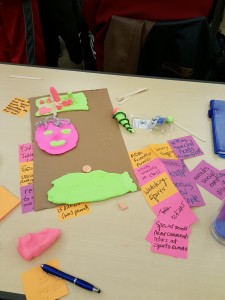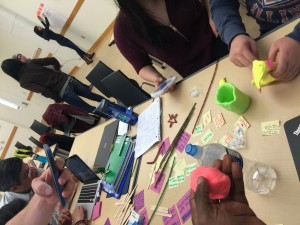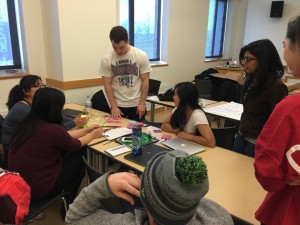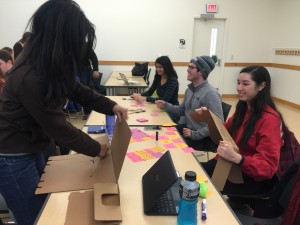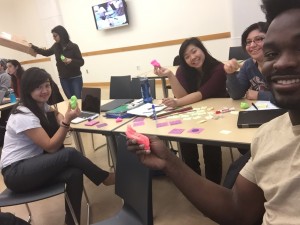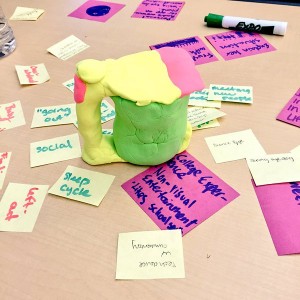This week we had a workshop with Design of America (DFA), University of Illinois chapter. The 4 speakers, Ryan, Michelle, Chandra, Mia, come from a very diverse background, with majors ranging from Media to Engineering. They gave us an overview into DFA, as well as the basics of design before we dived into the first activity – using out bodies to create letters in pairs! After that we were given 4 cases to pick and choose, and try to solve the problem with designs. The class split into teams of four in order to come up with a solution for one of the visually impaired individuals.They provided us with air clay and cardboard to create our prototypes, and we set to work. Each case involved individuals suffering from visual impairment.
The DFA gave us a very interesting perspective of design. Previously, I’ve always assumed that design is a very aesthetic thing. However, after this workshop i’ve learnt that design is a process for navigating challenges to uncover where you can make a difference in people’s lives. My idea of designing something is having an idea of what one wants to make and design as one is sketching. However, the DFA process is Emphatize – Define – Ideate – Prototype -Test, which is a much more streamlined process that what I expected.
This workshop has taught me to think from various perspectives, and think in creative ways to solve issues and problems. This is also a great insight into the work that DFA has done so far, and I look forward to be able to work on future designs that can solve problems.


